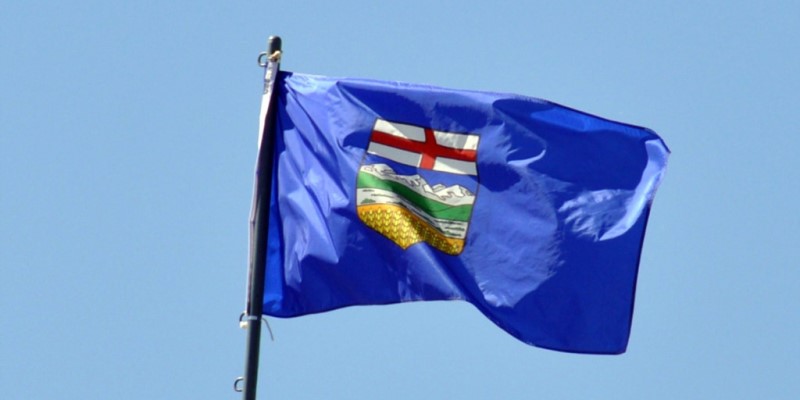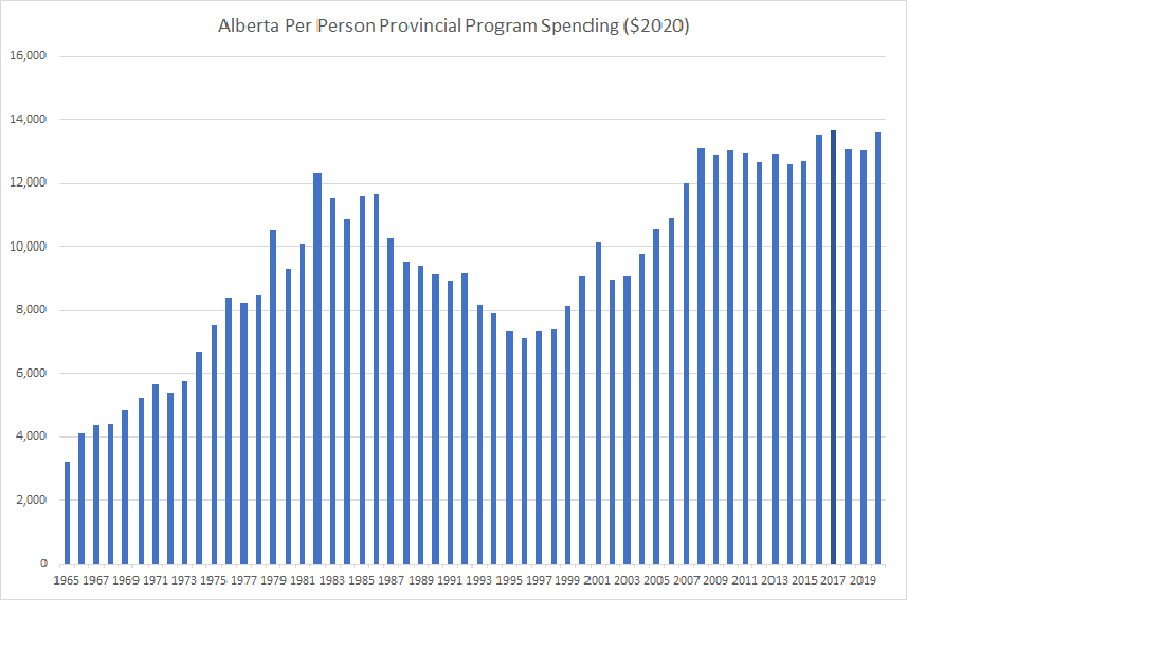Alberta government must learn from spending history

Governments in Alberta have a long history of increasing provincial program spending during periods of relatively high resource revenue. Given the current windfall and temptation for higher spending, it’s worth reviewing exactly how that’s panned out in the past.
As shown in the below chart, per-person spending, which excludes debt interest costs and is adjusted for inflation, increased significantly from mid-1960s to the early-1980s. Over much of the period—particularly in the 1970s—spending growth corresponded with relatively high oil prices and increased resource revenue for the provincial government. Overall, per-person spending grew from $3,216 in 1965 to $12,305 in 1982.

When resource revenue fell in the mid-1980s, the province incurred persistent deficits that led to an immense accumulation of government debt. To avoid a fiscal crisis, the Getty and Klein governments had to significantly reduce spending. With the goal of a balanced budget guiding the Klein government’s spending decisions—what economists call a “fiscal anchor”—per-person spending was reduced to $7,154 in 1996.
Unfortunately, the government did not learn from past mistakes.
Once the province balanced its budget in 1994/95 and began successfully paying down debt, per-person spending began another ascent, particularly as resource revenue increased in the early-2000s—similar to the previous period of prolonged spending growth.
As illustrated, the Klein government began to ramp up spending considerably by 2003 as the province became debt free and no longer had a clear fiscal anchor guiding its spending decisions.
By 2008, per-person spending reached $13,114. Its remained at or near record-high lev¬els since, marking a new era of high spending. In 2017 under premier Rachel Notley, per-person spending reached its highest level ($13,719) since 1965 while Jason Kenney recorded the second-highest level ($13,649) during the pandemic in 2020, the latest year of available data (that year, non-COVID related per-person spending totalled $12,347).
While the Kenney government has shown some signs of spending restraint, there’s a serious risk that the government will give into the pressure to increase spending with higher resource revenue, which will increase from a projected $4.5 billion annually to $13.1 billion from 2021/22 to 2023/24. As history has shown, this only leads to deficits and the need for more significant spending reductions.
Put simply, for the health of the province’s finances, the provincial government, at a minimum, should hold the line on spending.

